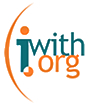
Discussing the Rights of the Child and Religious Beliefs with Academia and Decision-Makers in Geneva

In an increasingly globalized world, where the religious landscape is constantly evolving, discussing the right of the child to self-determination in religious beliefs and the extent of the role of the parents and caregivers in guiding them has become an urgent issue.

Promoting Peace Together: An Interfaith Dialogue to Foster a Culture of Peace Through Education
Several religious leaders and representatives from Permanent Missions to the United Nations Office in Geneva and faith-inspired organizations gathered at a conference titled Promoting Peace Together on May 21, 2019, to reflect on the importance of education for peace and interfaith dialogue.

Define your audience to improve the communication of your NGO
When an NGO asks what its target audience is, the first thing it will do is think about its donors. They are a very important piece of communication but not the only one. Then we tell you the different prototypes of profiles that any organization can have.
The Ágora Social entity proposes this profile scheme:
These are the most common public objectives and what do they expect from an organization:
Partners or donors
Beneficiaries
Users (in the case of an organization that provides services)
Society in general
Local community
Leaders of opinion
Business
Other organizations
Media
Public administration
Workers
Volunteers
Board or board of directors
You can read more here.

What use of technology do NGOs worldwide make?
From iWith.org we want to share the last report of 2018 that the Nonprofit Tech for Good organization publishes annually for 4 years.

In 2018, 5,352 NGOs from 654 countries distributed in 6 continents conducted the survey. According to the results obtained, web and email communications have become the most powerful online communication tools that NGOs have.
Currently, 92% of NGOs have a website. Of this percentage, 87% are compatible with mobile media.
· Online fundraising
72% of NGOs accept donations on their web portal and 33% use a personal online fundraising service.
· Social networks
Today, 93% of the world's NGOs have a Facebook page, 77% on Twitter, 56% on LinkedIn and 50% on Instagram. 71% of NGOs agree that social networks are effective for raising funds online and 25% of donors say that social networks are the communication tool that inspires them the most to give.
· Mobile technology
Today, the main mobile applications in the world are social networks and messaging applications, specifically, WhatsApp, Facebook, Messenger and Instagram. Although today only 18% of NGOs use messaging applications to communicate with donors and collaborators.
· Data management and Security
Today, 45% of NGOs use a CRM to track donations and manage communications with donors and collaborators. Of this percentage, 64% use a CRM based on the cloud.
Do you want to participate?
We encourage you to participate in the 2019 survey and therefore, from iWith.org we will inform you!
Survey 2019.









.jpg)